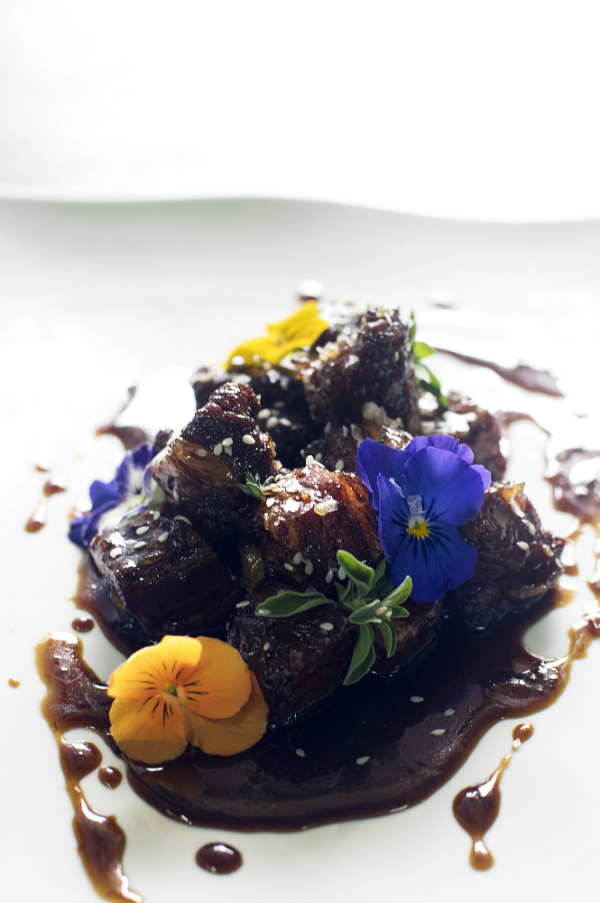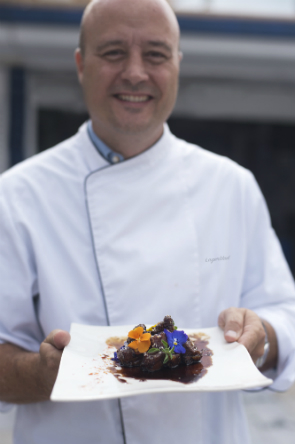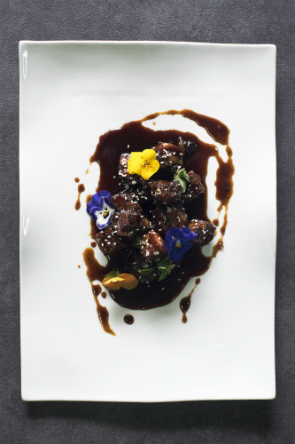1 kg joint of Bacon or Canary Black Pig
1 small spoon of oregan moka, thyme and sea salt
1 laurel leaf
2 litres of water
Watercress, oregano and thyme shoots
Edible flowers
Salt flakes
200 grs. cane honey (Guarapo)

The bacon joint is put on to boil in two litres of water, together with the oregano, thyme, laurel leaf and salt. Cook for about two hours.
Once the bacon joint has become tender, it is taken out of the water and placed on a tray, and underneath another tray with weight on it. It is left to cool in the fridge until it is completely compacted by the cold.
The next stage involves taking off the skin and cutting the joint into chunks, about 2 centimetres wide.
Next, the chunks are placed into a pan on mid heat with the honey. It is boiled for around 10 minutes, and is sprinkled with salt from time to time, with the help of a spoon.
Once the bacon has been impregnated with the Guarapo, it is served and decorated with the watercress, thyme and oregan shoots, the edible flowers and the fish scale salt to create the sweet and sour contrast.


Mario Hernández Lagerblad explains to us how his recipe came about:
"This is a recently created dish of mine, made from Canarian ingredients, such as the famous “Black Suckling” pig, an indigenous breed. This pork has a delicate flavour and texture, and is highly regarded in gastronomic terms. It is a breed that can be found today in the south of the United States, the result of Canary immigration through decades previously.
The guarapo juice is extracted from the palm tree. It is cooked for a period until it reaches a certain density and its characteristic dark colour.
The cooking technique and the dish we present is inspired by asian cooking, in which this kind of savoury and sweet contrast is quite common, and makes these kinds of meat softer on the tongue and easier to eat. It’s high levels of fat are offset by the guarapo."

Our 7th `dish-enhancing’ secret ingredient
The sheer diversity in flower species on the island is the basis for the high quality honey made in Gran Canaria. Its special flavour is born out of a blend of species, to the point that it is uncommon to find a honey made out of just one particular flower.
Honey production is flourishing on the island. The Cabildo de Gran Canaria has created a quality brand which distinguishes those honeys, in whose extraction methods are used that don’t lessen the properties of the end product.